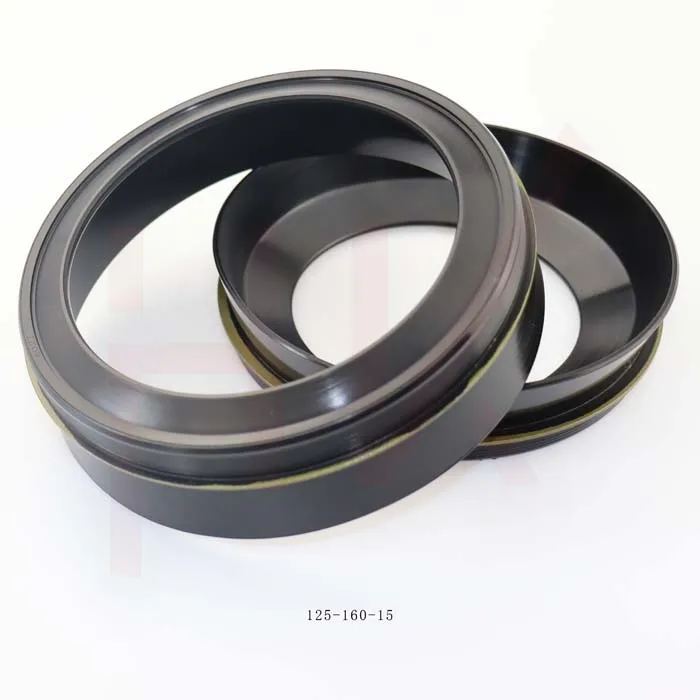pro . 29, 2024 12:22 Back to list
Hydraulic Pump Seal Solutions for Enhanced Performance and Durability in Fluid Systems
Understanding Hydraulic Pump Seals Essential Components for Efficiency and Longevity
Hydraulic pumps play a crucial role in various industrial applications, from manufacturing to construction. One of the critical components that ensures their efficiency and longevity is hydraulic pump seals. These seals are often overlooked, yet they serve as the first line of defense against fluid leaks and contamination, significantly impacting the pump's performance and lifespan. In this article, we will explore the functions, types, materials, and importance of hydraulic pump seals.
Functions of Hydraulic Pump Seals
Hydraulic pump seals primarily serve two essential functions preventing fluid leakage and keeping contaminants out.
1. Preventing Fluid Leakage Hydraulic systems rely on pressurized fluid to transmit power. If the seals fail, hydraulic fluid can leak out, leading to system inefficiency and potential damage. Leakage can also pose environmental hazards, particularly in industrial settings.
2. Keeping Contaminants Out Contamination can result from dust, dirt, or moisture entering the hydraulic system. If contaminants mix with the hydraulic fluid, they can reduce lubrication effectiveness, lead to abrasive wear, and cause system failure. Proper seals help maintain a clean hydraulic environment by preventing external particles from entering the system.
Types of Hydraulic Pump Seals
There are several types of hydraulic pump seals, each designed for specific applications and operational conditions. The most common types include
1. O-Rings O-rings are ring-shaped seals that fit into a groove and create a seal when compressed. They are versatile, cost-effective, and suitable for various applications, making them the most commonly used seals in hydraulic pumps.
2. Mechanical Seals Mechanical seals are used in high-pressure applications where O-rings may not provide adequate sealing. They consist of rotating and stationary parts that create a tight seal through contact.
3. Lip Seals Lip seals, or radial shaft seals, use a flexible lip that presses against a shaft to prevent fluid leakage. They are particularly effective in dynamic applications where there is relative motion between components.
4. U-Cups U-cups are used in applications where they can seal against high pressures and have higher resistance to extrusion. They are especially suitable for applications with reciprocating motion.
Materials Used for Hydraulic Pump Seals
hydraulic pump seals

The effectiveness of hydraulic seals largely depends on the materials used in their construction. Common materials include
1. Nitrile Rubber (Buna-N) This is a popular material for O-rings due to its excellent resistance to hydraulic fluids and temperature fluctuations. Nitrile rubber seals are effective in moderate-pressure applications.
2. Fluorocarbon Rubber (Viton) Known for its high-temperature resistance and compatibility with various chemicals, fluorocarbon rubber is ideal for harsh working conditions.
3. Polyurethane This material offers excellent wear resistance, making it suitable for dynamic applications like hydraulic cylinders.
4. PTFE (Teflon) PTFE seals are chemically resistant and can withstand extreme temperatures, making them ideal for specialized applications.
Importance of Choosing the Right Seals
Selecting the right hydraulic pump seals is crucial for the performance and longevity of hydraulic systems. Incorrect seals can lead to premature wear, higher maintenance costs, and system failures. Several factors should be considered when choosing seals, such as
1. Fluid Compatibility It’s important to select seals that can withstand the specific hydraulic fluids used in the system. Different fluids have varying chemical properties and can degrade certain seal materials.
2. Temperature Range Seals must operate within specific temperature limits. Choosing a seal that can withstand extreme temperatures ensures consistent performance.
3. Pressure Levels Understanding the operating pressure of the hydraulic system is essential for selecting seals that can adequately resist leakage without extrusion.
4. Application Type The nature of the application, whether dynamic or static, will determine the type of seal needed. Dynamic seals must be designed to handle motion, while static seals can be simpler in design.
Conclusion
Hydraulic pump seals are integral components that ensure the efficient and reliable operation of hydraulic systems. By understanding their functions, types, and the materials used, operators can make informed decisions when selecting seals that enhance performance and extend the service life of hydraulic pumps. Proper maintenance and timely replacement of worn seals can also prevent costly downtime and extend the life of hydraulic equipment, making seal management a key aspect of hydraulic system upkeep.
-
Cassette Seal 15018014.5/16 Hub Oil Seal | OEM Quality 000051785
NewsAug.31,2025
-
DKBI Hydraulic Wiper Seal 20x32x6/9 | Dustproof & Standard Oil Seal
NewsAug.30,2025
-
Eaton 5423 6423 Motor Repair Seal Kit: Premium Quality & Fit
NewsAug.29,2025
-
25x47x7 High Quality Tcv Oil Seal for Hydraulic Pump
NewsAug.28,2025
-
Wiper Oil Seal: Our Commitment to Clean Hydraulics
NewsAug.13,2025
-
Hydraulic Oil Seal for Self Discharging Cars
NewsAug.13,2025
-
Hub Oil Seal for Agricultural Tractor Hubs
NewsAug.13,2025
Products categories
















